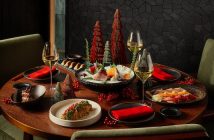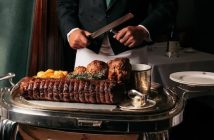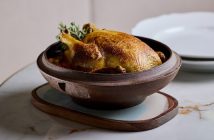In his first shot at travel writing, ex-ad man Peter Mayle offered A Year in Provence to the world and this promptly brought the world to Provence. Whether you love him or hate him for bashing down the cultural floodgates and obsessing all us foreigners with the joys and tribulations of fine charcuterie, mistrals, robust wines and crafty French tradesmen, you can’t dispute that it was an important book, a book that spawned a whole genre of travel writing. Critics were less blown away by his first stab at fiction. The New Yorker wrote of Hotel Pastis, “Mayle is a writer of grace and good humour, and he gives us here…a fine…light novel”. Not negative comments as such, but let me tell you, Anna Karenina this is not. I read the book last summer. It’s impressively lacking in substance. The main narrative is a thinly veiled ‘fictional’ re-run of Mayle’s experiences exploring the South of France, but what I enjoyed was the pleasing secondary narrative, and it was this narrative that I was reminded of on a recent visit to Café Bohème in Soho.

In the book, a group of bloated ex-cons decide to do one last job and rob the village bank of a sleepy Provençal village before escaping en masse on bicycles, dressed as semi-professional cyclists. It’s all a little improbable, but their story is told with great humour and sensuality. What really appealed to me were the various descriptions of the Marseillaise criminals meeting in the smoke-filled bars of Bonnieux to plot their crime over glasses of vin rouge and rump steaks. There is a richness to these descriptions that draws you in. Mayle has an uncanny knack for bringing these clichéd settings to life and transporting you into a world where unfiltered Gauloises are smoked through the scarred fingers of workmen, of steak frites taken on the hoof, washed down quickly with cheap Pastis. It is the romantic’s vision of a provincial France of yesteryear, the opium that a thousand holiday homes in the Lubéron were sold on. As I wandered toward Café Bohème on Old Compton Street I realised that this intoxicating French dream is exactly the vision that the clever chaps at Soho House Group had when they opened the restaurant.
The night is cold and the room is warm and inviting. The tables are dark wood and the banquettes are deep red leather. The zinc bar shines in the warm, carefully conceived light, and for a moment there’s a sense we could be in one of those Bonnieux bars in the late 1980s. I can almost smell the black tobacco and hear the soft voices of the crims plotting away in the corner. It’s so evocative, the voices not so soft now, the tobacco improbably fragrant – oh, no wait, I’m wrong; that’s actually skunk. There’s a tramp standing outside the window on Old Compton Street smoking a joint and the pungent smoke is seeping through the window – we’re not in Provence, we’re on the mean streets of Soho and that’s as good as you’ll get in your search for a smoke-filled bar.

We sit down and survey the Francophile menu. The food is a solid stab at provincial French bistro food. There’s charcuterie and steak, Toulouse sausages and terrines, with ‘pichets’ of Picpoul de Pinet to wash it all down. It’s all hearty, rib-sticking stuff; the food may feel a little formulaic in parts, but that’s sort of the point, and the professionalism and charm throughout is hard to fault.
I’m celebrating a personal victory on the day of our visit, so I begin with a glass of Champagne and 12 Fines de Claire oysters. Now, I’ve recently been to Paris and West Mersea Island and enjoyed the best bivalves on offer in both destinations, and I can safely say these are better. These are the best oysters I’ve eaten in an age: big, saline, sloppy, mineral monsters. I ate them naked, as they came; I didn’t even adorn them with lemon juice. Sublime. That’s all there is to say.

Steak tartare is a little too composed for me; I like chopped beef with a rugged-cut and sloppy texture. This one is upstanding and well-seasoned, if a little reticent. The baguette and butter are both of fine quality. Sarah’s calf’s liver is a triumph; the liver is soft and sweet, but with a dark, animal richness that is emphasised by a sticky meat reduction. Entrecôte frites comes with little adornment: a simple plate of protein, fat and carbs – this is the food the fictional bank robbers crave. The steak is very good, not excellent, not deficient in any way, and this is exactly as it should be. This is a bistro – bistros don’t serve the world’s best steak. The wine comes in a simple carafe. It’s a sturdy, Carignan-based blend, vin du soif as they say – one for knocking back.
Café Bohème presents a very appropriate vision of the bistro abroad. The restaurant’s appeal lies in its simplicity and self-awareness. It’s not a weak parody of the bistro, in the style of Café Rouge or several others I can think of. It’s the kind of restaurant that invites a certain sort of carefree romantic attitude. There’s a lovely, spirited, end-of-the-week type atmosphere. Good restaurants allow you to lose yourself in a moment and luxuriate in a suspended state, and this is what Café Bohème does for me. Now where’s that Champagne, and how about a plate of those oysters…?
Café Bohème 15-17 Old Compton St London W1D 5JQ. Tel. 020 7734 0623. Website.




